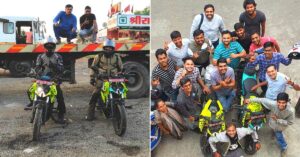Do EVs Work For Road Trips? How I Travelled From Delhi to Spiti In Just Rs 2000
Wondering how easy or tough it is to take road trips in electric vehicles? Anjnay Saini from Delhi drove all the way to Spiti and back in his electric Tata Nexon. Here's what he learnt from his experience.

Anjnay Saini from Delhi started driving cars 13 years ago and like most Delhiites driving north to the beautiful destinations like Himachal Pradesh and Ladakh featured in his desire list too.
So he jumped on every opportunity to travel on the incredibly scenic routes.
His latest trip to Spiti Valley, a cold desert mountain valley located high in the Himalayas, was his personal favourite, where he drove his Tata Nexon electric SUV and covered a total distance of 1,900 km.
On June 13, he left Delhi with his three friends and drove via Sonipat, Karnal, Chandigarh and Shimla. The goal was to reach the world’s highest post office and petrol pump in Hikkim and Kaza, respectively.
True to its iconic destinations, Spiti happens to be a high altitude desert with extreme terrain and rough weather. Amidst the windswept landscape is a treacherous path so narrow that accidents are a common phenomenon.
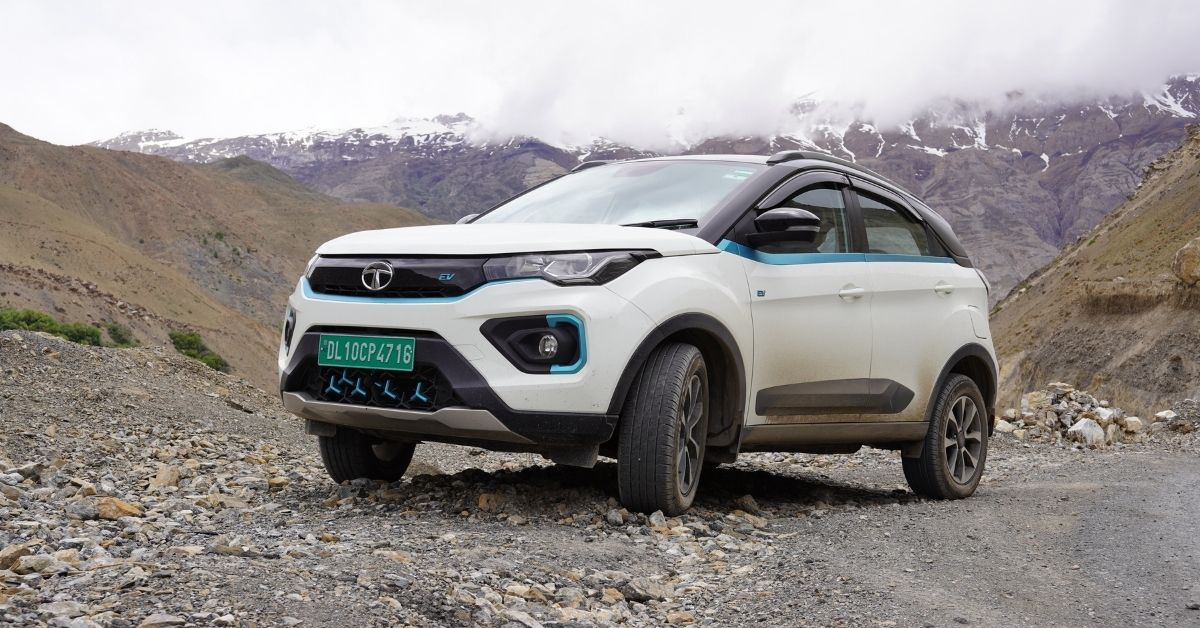
Saini’s decision to drive in an electric car on difficult terrain where there are no proper roads, let alone have charging stations, was a bold, albeit risky one.
But with proper planning and calculated stops, he completed the journey with minor bumps.
“This has been my most challenging but exciting trip so far. During the five-day trip I learnt, adapted and planned. From electric units, range anxiety, regenerative braking to strangers’ kindness on seeing an electric car, I added new terms and experiences to my road trip dictionary,” Saini tells The Better India.
Pre-journey preparations
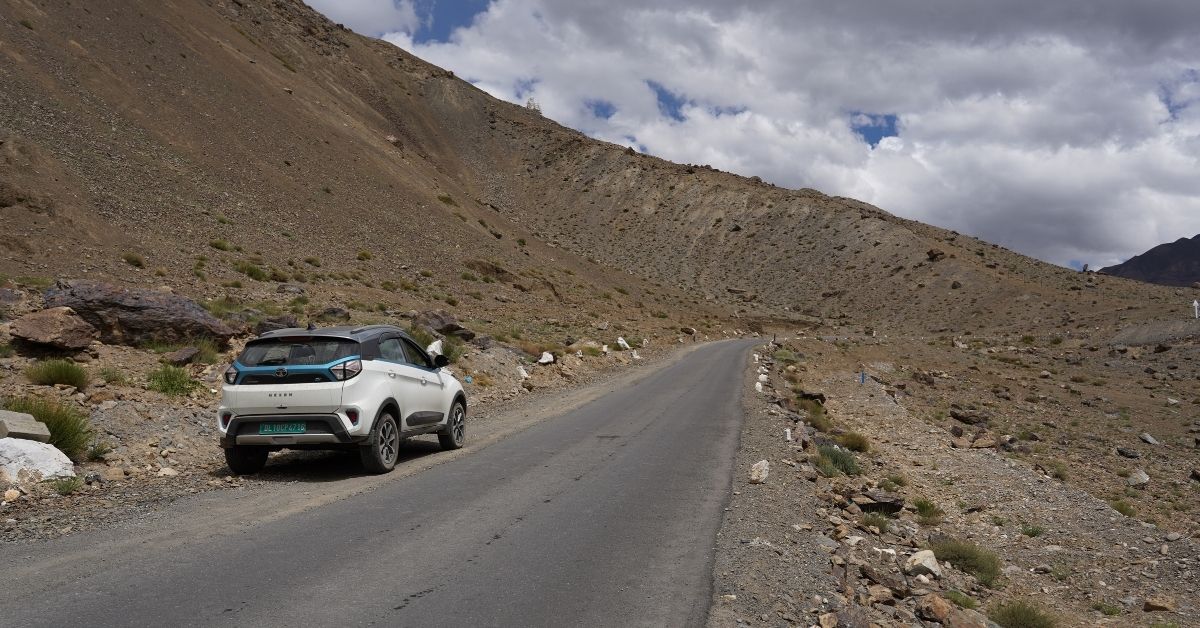
Tata Nexon’s range is 312 km on a single charge and the battery takes 8.5 hours to charge fully. So Saini swears by having mental preparedness, discipline and patience when driving an EV.
“Slow driving is a must for an EV driver, if there is no charging infrastructure. In Nexon, you can get a terrific range of 200 km, if you drive at 80 kmph. By controlling my speed I was able to get a range up to 320 km. The average range on hilly parts was 180 km. This means being okay with several vehicles overtaking you,” he notes.
In an EV, the best way to prevent fast battery drainage, the driver must accelerate less and have fewer sudden breaks. Saini’s main focus was on battery optimisation through regeneration of energy.

“I identified routes that were downhill for the regenerative braking, which helps in increasing range while saving energy. In petrol-based cars, the power tends to reduce in high terrains but in an EV it can be beneficial,” says Saini.
Next, he called all the hotels he was going to stay to enquire about charging facilities to ensure there were no surprises later. He carried an earthing kit for continuous current flow while charging and a 15-ampere charger.
With help from apps, he identified three DC (Direct Current) charging stations — Statiq, TataEZ and Forteum, on his route.
Knowing that dhabas and restaurants have AC (Alternate Current) charging that is slow, their rest stops were planned in a way that gave him and his friends time to eat, rest or sleep while the car was charging.
Going miles

Saini and his friends took two cars (an EV and a petrol-based model) as video shooting equipment for vlogging demanded that much space. They left Delhi around 5 pm with a fully charged car, and the 12-hour drive from Delhi to Shimla was smooth.
The real task began once they entered the valley due to steep roads. For this, Saini followed a thumb rule.
“One kilometre takes 1% of battery charge on an upward slope and for downhill the same percentage can cover 4 km, thanks to kinetic energy. ‘Stop-pedal-accelerator’ became my motto,” says Saini.
By the time the friends reached Shimla from Chandigarh, they were left with 20% charge. So they took a halt for six hours and plugged in the car. They were able to charge till 60%, which was enough to cover another 126 km and reach Rampur.
“Almost 40% of that route was downhill, so we were able to regenerate 30% charge and we were left with almost 40% battery when we reached. We halted at a roadside dhaba for two hours which helped charge 20% more giving us a total of 60% charge. We stopped again for dinner and put the car to charge for two hours, drove overnight and reached Reckong Peo at 8 am with 10% battery left,” he notes.
At this point, they entered the Kinnaur valley and rested for six hours to charge the car till 80%. They covered a distance of 101 km and reached Nako with 13% charge left. The ride was smooth despite minus 2° Celsius and snow-covered roads.
At Nako, they took a quick two-hour break and charged up to 33% and left for Chango Nichla, which was 26 km away. Thanks to the downhill advantage, the car had 20% battery left. The friends stayed overnight at a hotel and charged the car fully.
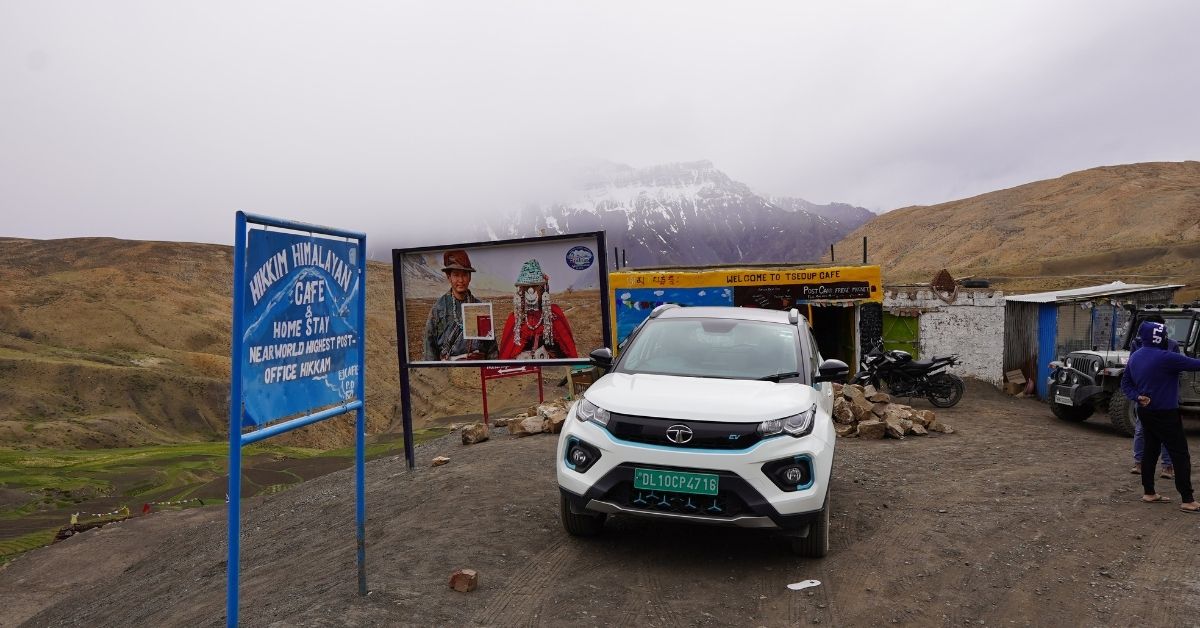
Next morning, they left for Kaza, capital of Spiti Valley with 42% charge left after covering nearly 120 km. They checked into a hotel around 3 pm.
Next day, the car reached the world’s highest petrol pump and post office.
“The oxygen was very low, the terrain was progressively worse and we witnessed a heavy snowfall. Despite this, I didn’t have range anxiety as we travelled a total distance of 68 km with 18% charge left,” says Saini.
While returning, the first charging stop was at Rampur. The car was charged till 70%, which helped them cover 110 km till Shimla.
“Shimla to Chandigarh is a downhill road and this was when I experienced the best battery performance. From Chandigarh, we came to Karnal and rested for an hour. The fast changing station charged the car to 40% and I reached home with 20% charge left. I drove in S (sports) mode in the final leg,” he adds.
Highlights of the trip
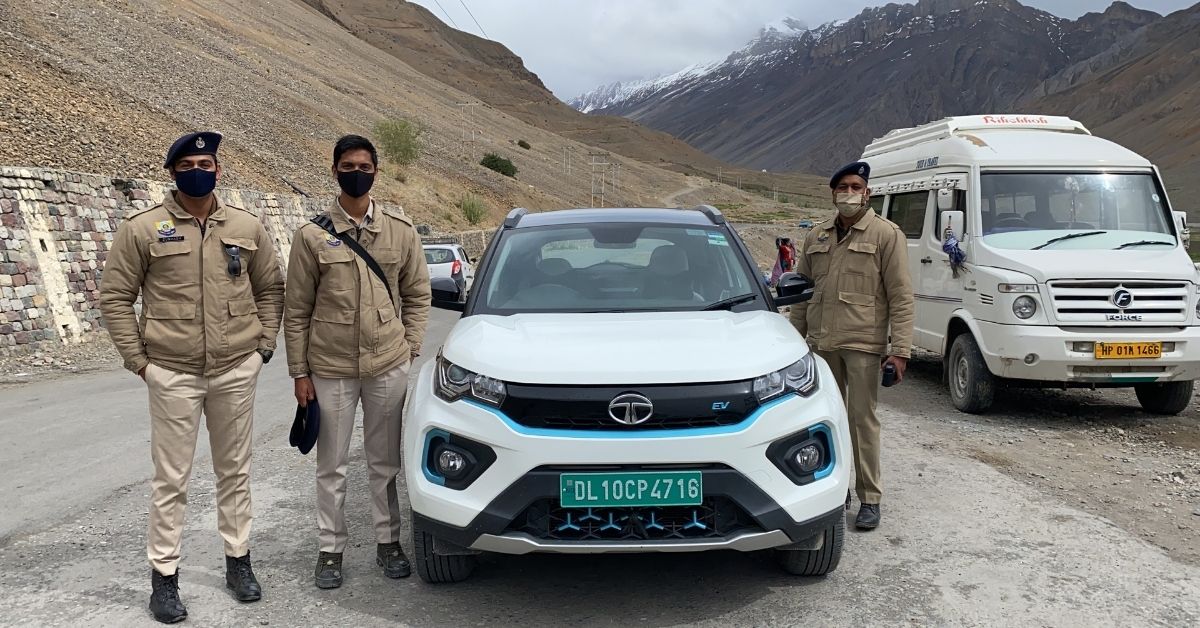
The friends spent nearly Rs 18,000 for the petrol-based car to cover a distance of 1,900 km. Meanwhile, the Nexon covered the same distance at just Rs 2,000. Based on the cost of electricity per unit and hours taken to charge, Saini paid for charging at every hotel, restaurant and dhaba.
“We paid Re 1 per km which proved to be extremely cost effective and more importantly environmentally-friendly,” says Saini.
One of the best parts about the trip, he says, was how welcoming the people, including the police, were wherever they went.
“Restaurant owners, locals, tourists and policemen were curious to know how we would travel in Spiti without much infrastructure. The dhaba owners were happy to provide their charging stations. Even the hotels cooperated fully. This shows that people are interested in EVs,” he adds.
As we come to the end of our conversation, Saini excitedly reveals that he reached Goa the previous day. He took his Nexon from Delhi and crossed nearly four states. If you want to know how that trip went, follow him here.
Edited by Yoshita Rao
If you found our stories insightful, informative, or even just enjoyable, we invite you to consider making a voluntary payment to support the work we do at The Better India. Your contribution helps us continue producing quality content that educates, inspires, and drives positive change.
Choose one of the payment options below for your contribution-
By paying for the stories you value, you directly contribute to sustaining our efforts focused on making a difference in the world. Together, let's ensure that impactful stories continue to be told and shared, enriching lives and communities alike.
Thank you for your support. Here are some frequently asked questions you might find helpful to know why you are contributing?


This story made me
-
97
-
121
-
89
-
167




